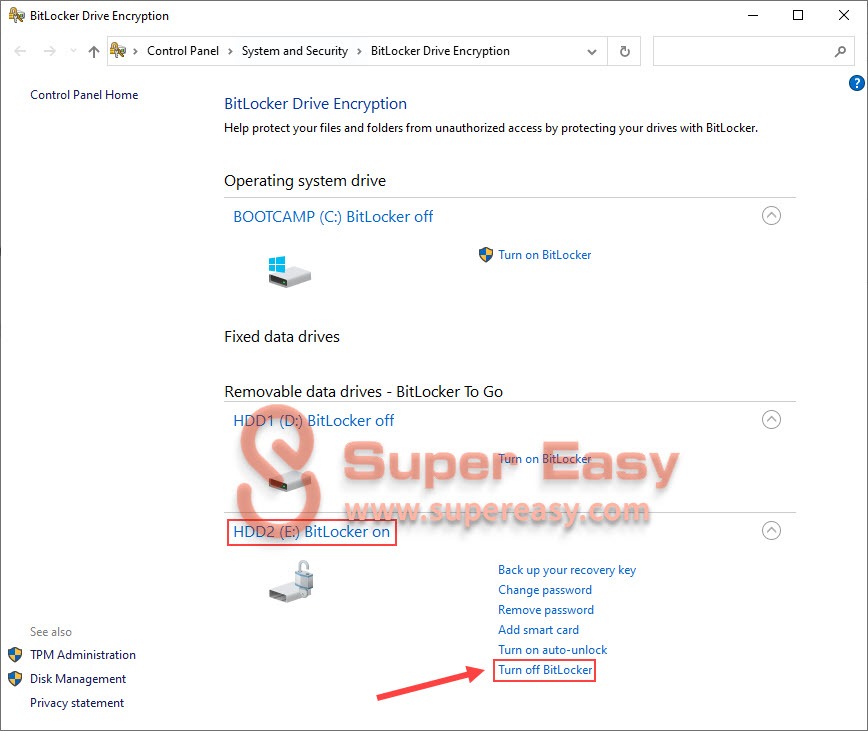

Then you can disable BitLocker for the volume. You can use the Clear-BitLockerAutoUnlock cmdlet to remove all automatic unlocking keys. If the volume that hosts the operating system contains any automatic unlocking keys, the cmdlet does not proceed. When you run this cmdlet, it removes all key protectors and begins decrypting the content of the volume. The Disable-BitLocker cmdlet disables BitLocker Drive Encryption for a BitLocker volume. To configure BitLocker, go through this link.ĭisables BitLocker encryption for a volume. In Control Panel, select System and Security, and then under BitLocker Drive Encryption, select Manage BitLocker.Disable-BitLocker is accessible with the help of BitLocker module.
DISABLE BITLOCKER WINDOWS
Or you can select the Start button, and then under Windows System, select Control Panel. In the search box on the taskbar, type Manage BitLocker and then select it from the list of results. For more info, see Create a local or administrator account in Windows 10. Sign in to your Windows device with an administrator account (you may have to sign out and back in to switch accounts). If device encryption is turned off, select Turn on. You may be able to turn on standard BitLocker encryption instead. If Device encryption doesn't appear, it isn't available.
DISABLE BITLOCKER UPDATE
Select the Start button, then select Settings > Update & Security > Device encryption. Sign in to Windows with an administrator account (you may have to sign out and back in to switch accounts). If it isn't available, you may be able to use standard BitLocker encryption instead. If the value says Meets prerequisites, then device encryption is available on your device. Or you can select the Start button, and then under Windows Administrative Tools, select System Information.Īt the bottom of the System Information window, find Device Encryption Support. In the search box on the taskbar, type System Information, right-click System Information in the list of results, then select Run as administrator. Not sure which version of Windows you have? See Which Windows operating system am I running? To see if you can use device encryption
DISABLE BITLOCKER FULL
For example, a Surface Pro which runs Windows 10 Pro has both the simplified device encryption experience, and the full BitLocker management controls. Some devices have both types of encryption. If you want to use standard BitLocker encryption instead, it's available on supported devices running Windows 10 Pro, Enterprise, or Education. Is it available on my device?ĭevice encryption is available on supported devices running any Windows 10 edition. Without the decryption key the data on the drive will just look like gibberish to them. If your drive is encrypted, however, when they try to use that method to access the drive they'll have to provide the decryption key (which they shouldn't have) in order to access anything on the drive. Then by adding your hard drive as a second drive on a machine they control, they may be able to access your data without needing your credentials.

If somebody wants to bypass those Windows protections they could open the computer case and remove the physical hard drive. Normally when you access your data it's through Windows 10 and has the usual protections associated with signing into Windows 10.


 0 kommentar(er)
0 kommentar(er)
